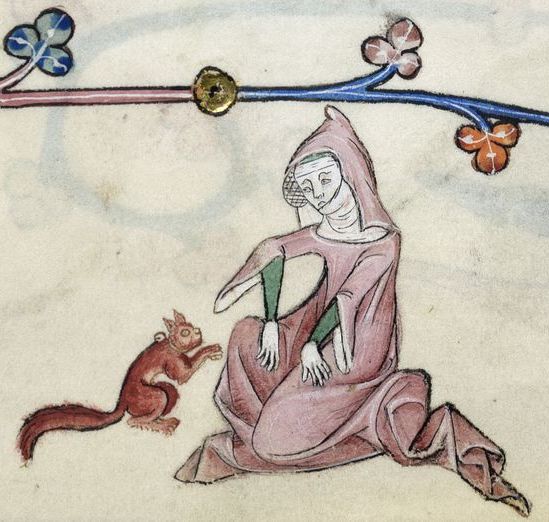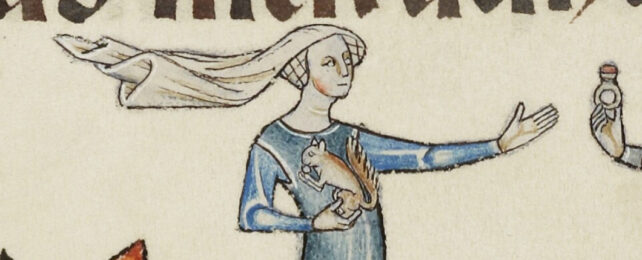In medieval England, humans lived in much closer quarters with red squirrels than most of us do today. And that's not just because squirrel fur was the most widely-use for garment trimmings in the High and Late Middle Ages – they were also kept as pets.
But a new study may explain why the two species have fallen out over the years: a deadly disease known as leprosy.
Just who infected who first remains a mystery, but it now appears both humans and red squirrels (Sciurus vulgaris) living around Winchester, England, between the 9th and 14th century carried the same strain of the leprosy-causing bacterium Mycobacterium leprae.
Zoonotic disease transfer has become a hot topic thanks to the interspecies spread of the COVID-19 pandemic, which resulted in seriously bad PR for bats, a nation-wide mink cull, and grave concerns for our pets.
"There has been no consideration of the role that animals might have played in the transmission and spread of the disease in the past, and as such, our understanding of leprosy's history is incomplete until these hosts are considered," says archeologist Verena Schünemann from the University of Basel in Switzerland.
The medieval city of Winchester was well-known for its squirrel fur trade, and also for St Mary Magdalen's leprosarium (active between the 11th and 15th centuries), making it an ideal place to hunt for the genetic bridge linking leprosy in both medieval squirrels and humans.
Human remains with genetic markers of leprosy were an easy find, buried in the yard of St Mary Magdalen's. Genetic analysis on 25 human bones, some with lesions and some without, were used to create a reference for medieval strains of M. leprae.
Red squirrel remains were found at Staple Gardens, an historic street in the city's center just two miles west of the leprosarium. Many kinds of animal foot bones were buried at what was once a medieval furrier. These were often discarded by skinners, because as you can imagine, the feet are generally a bit too fiddly to bother with.
Only one of twelve squirrel samples had sufficient evidence of leprosy to be used for comparison. But the strain of leprosy it had was a strong match for the three complete M. leprae genomes profiled from human remains.

"With our genetic analysis we were able to identify red squirrels as the first ancient animal host of leprosy," says Schünemann.
Humans are the main hosts for leprosy bacteria, M. leprae and less commonly M. lepromatosis, which can cause nerve damage, blindness, loss of smell, hair loss, dry skin, and if untreated, highly stigmatized and harmful lesions.
But M. leprae is also known to infect wild animals, like armadillos in the Americas, chimpanzees in West Africa, and modern red squirrels on Brownsea Island in Britain, which harbor a medieval strain distinct from the one found in Winchester.
"The medieval red squirrel strain we recovered is more closely related to medieval human strains from the same city than to strains isolated from infected modern red squirrels," says Schünemann.
"A direct comparison between ancient animal and human strains enables us to reconstruct potential transmission events over time and helps to form conclusions about the long-term zoonotic potential of the disease."
The researchers hope these findings might inform modern attempts to manage and eradicate the disease, especially where interspecies transmission is involved.
This research is published in Current Biology.
